by davidlecours | Sep 21, 2011 | Story
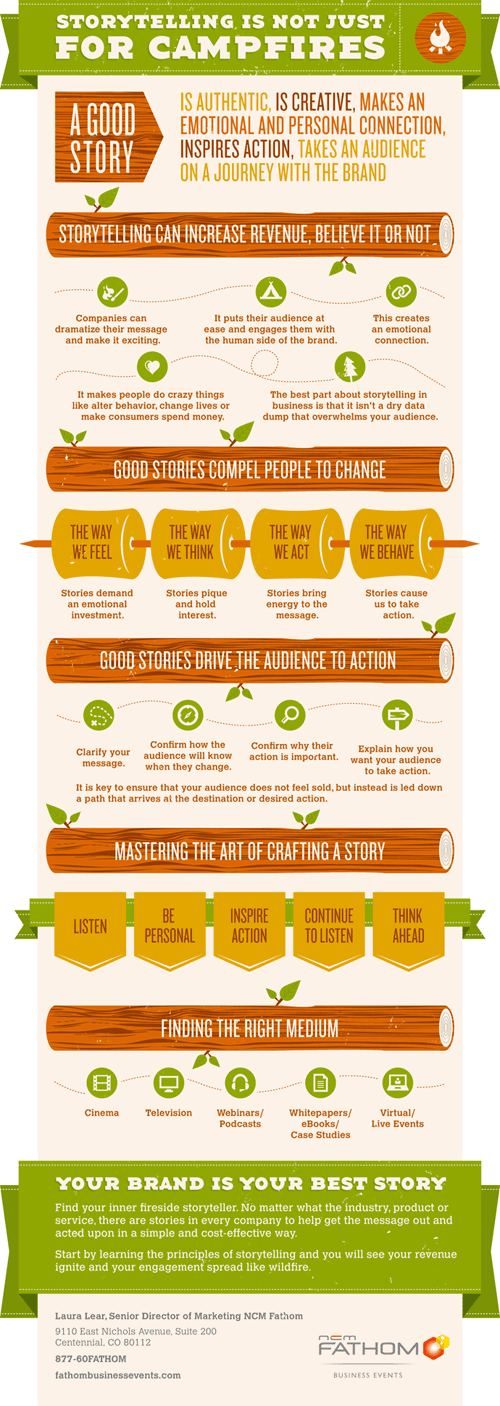
I love this infographic designed by Fathom Business Events to communicate how and why storytelling is a great brand building strategy. If you like this graphic, you might enjoy viewing my TEDx AFC speech titled The Power of Story.

by davidlecours | Jun 29, 2011 | Branding
Have you noticed that several companies have recently updated their logos? Starbucks, GAP, Pepsi, and Comedy Central all come to mind. Should your firm update its logo? Here are four good reasons to freshen up.
1. Your Firm Has Come of Age
Congratulations! While many new businesses don’t last more than two years, yours is healthy, growing and moving from childhood into adolescence. In start-up mode, you probably didn’t invest the time, energy, and dollars to create a logo and brand identity system that represents the level of professionalism you now want to convey. As the saying goes, “what got you here, won’t get you there.” It’s time to shed the toddler haircut and baby clothes for a more grown-up look.
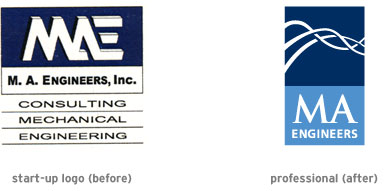
Perhaps your firm has reached a significant milestone. A fresh new logo can be a great way to symbolize this accomplishment. As Schmidt Design Group approached their 20 year anniversary, we worked with them to design a new logo and book that were unveiled at their 20th Anniversary Party.
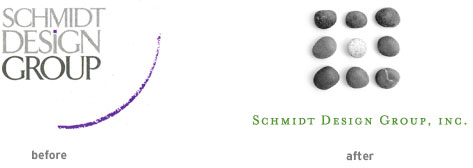
2. Your Logo is Rotten (beyond its expiration date)
Everything has a life cycle. Businesses and logos go through distinct phases of conception, growth, maturity and decline. Like the myth of Narcissus, we can get overly attached to our own (brand) image. This can blind us into denial about the fact that our logo has gone into decline. Just as fashion and hairstyles become dated, your logo’s color, typography (font), and symbol may be communicating that your firm is past its prime. Even classics, like the Shell logo below, get a facelift every ten or so years.

3. A New Strategic Plan
A healthy firm grows and evolves to respond to new demands and opportunities in the marketplace. This could mean that your firm has added new services to your quiver. Or, you may be serving new markets. If the evolution of your firm is significant, you’ll want to shift the perception of prospective clients to catch up with the new you. A new logo can symbolize this shift. The first time we worked with Island Architects in 1999, it was to update their start-up logo into a more professional mark (reason #1 above). Then, in 2008, the firm made a strategic decision to communicate that they design modern homes in addition to their heritage of classical homes. A logo should be a beacon communicating where you are headed, not where you’ve been.

4. Merger, Acquisition or Ownership Change
A change in firm ownership can often inspire a new firm name and thus a new logo. Even if the firm name persists for continuity, new leadership may want a new visual symbol to represent their new era. When we began work with Tucker Sadler Noble Castro Architects, they had new owners, new Principals and a new office. Instead of continuing to add the names of Principals to the firm name, they shortened it to Tucker Sadler to reflect their founders, their web site address, and how they were referred to colloquially. We designed a new logo and brand identity system to propel the firm into a new chapter of their evolution.
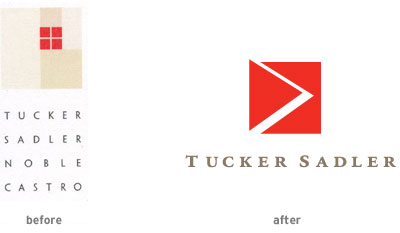
Your logo is not your brand, but it is the most visible touchpoint of your brand. So, how do you know when it’s time to update your logo? The previous four scenarios are all good reasons. Or, consider hiring LecoursDesign to perform a Brand Audit. This wise investment will help you determine the strength of your logo and all your brand touchpoints.
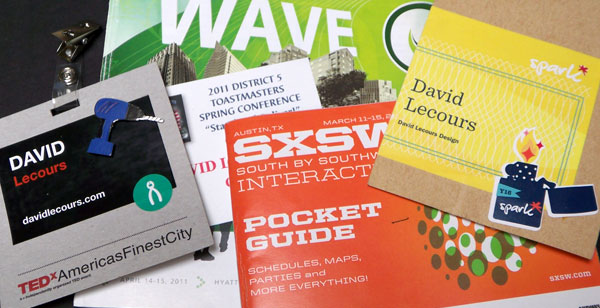
by davidlecours | Jun 1, 2011 | Experience Marketing

Do you enjoy attending conferences as much as I do? Meeting new people, exposure to new ideas and idealism are all infectious. But a week after the conference is over, what really sticks with you? Is your investment of time and money worthwhile? Here are 8 Tips for marketers to get the most out of attending your next conference.
1. Choose The Right Conference
It’s tempting to only attend conferences where your tribe gathers (fellow marketers, architects, engineers, etc.). This can be good for teaming, but also choose conferences where potential clients gather. Ask your current clients, in your targeted industry, which conferences they attend. Then consider who the speakers and attendees will be. I’ve found that regional conferences like SMPS The Wave offers more intimacy and a higher concentration of potential clients than national conferences.
2. Don’t Just Attend
A great way to build brand awareness for yourself and your firm is to be visible at a conference. The best way to do this is get on the agenda as a presenter. Start with being a panelist in a breakout, then a sole presenter. Move your way up the food chain to be a panelist or keynote speaker in a main session. Conferences typically put out a request for presenters at least 6 months prior to the event. Another great way to build visibility at a conference is to be a sponsor (but only if this allows for personal introductions to VIP organizers or attendees). Consider volunteering to help organize the conference in a way that allows you to demonstrate your talents, or develop a new skill. In short, connect yourself to the conference to benefit from the halo effect.
3. Pre-Conference Networking
Conferences always announce speakers before the event as a marketing tool. Determine which speakers you would like to meet and start following them on Twitter or subscribe to their newsletter. Help to promote their session at the conference by tweeting something like “I’m excited to learn from @lecoursdesign at the @SMPStheWave conference.” Genuine flattery will make you more memorable when you actually meet the speaker at the conference. The previous tweet also helps to promote the conference itself which might gain you an extra drink ticket from your new friend, the conference organizer. Conferences will often pre-announce attendees. This is a great opportunity to reach out to those you’d like to meet. Pre-arrange meeting for a meal, or for coffee during a break, because nobody likes being that lonely guy standing around trying to look occupied.
4. Planning, Goals, and Flexibility
Once the conference starts, it’s easy to simply follow the herd. But you need to be selfish to make sure your needs are met. Get clear on why you are attending a conference before you register. This can be your purpose. Then set some goals that will support that purpose. For example, you may want to meet 5 new client prospects, gain 3 new blog ideas, or find 2 potential teaming partners. Look through the conference agenda to make a tentative schedule for the sessions and breakouts you prefer to attend. Then be flexible enough to adapt when Seth Godin asks you to lunch because you pre-conference tweeted about his session.
5. Capture Content Digitally
I am migrating from taking handwritten notes in a notebook to using a laptop, and eventually a tablet. My handwriting can be illegible and I often use my notes as content for this blog so going digital is more efficient. By capturing your notes digitally, you eliminate the intermediary step of having to transcribe your notes. This increases the shelf life of that content. For visuals, use your smart phone or digital camera to capture key slides of a presentation. Digital video or audio capture is another great way to make sure you don’t miss a word.
6. Share What You Learned
It’s been said that you don’t really know a subject until you teach it to someone else. A great way to digest the knowledge you consumed at the conference is to share it with others. Those that weren’t able to attend the conference will appreciate this. Those that did attend will appreciate a review, and also hearing about alternate breakout sessions that they were not able to attend. One way to share is to live tweet those nuggets of wisdom your followers would appreciate. Or, share a blog post about individual sessions or highlights of the entire conference.
7. Meeting New People
A big motivation for me to attend conferences is to meet new people. But as an introvert, this can be challenging. Introducing oneself is awkward for most people. An effective icebreaker is to ask “what did you think of the previous speaker/session?” or “what’s the best thing you’ve heard at this conference?” There is no doubt that you’ll be asked “what do you do?” or “where do you work?” Have a self introduction that is intriguing enough that people will ask follow-on questions. For more info on writing a good self introduction, click here. A final tip is to eat lunch with people you don’t know. One of my best friends today is someone that I met at lunch at a conference over five years ago.
8. Absorb As Much As Possible
Conferences can be physically, mentally and emotionally tiring. Sleep on the plane or when you get home. Seize every opportunity that the conference offers to get a full return on your investment. Some of the best conversations and connections get made around the periphery of a conference. I’m still kicking myself for not joining a group going out after SMPS The Wave. I missed out on a live mermaid swimming in a giant tank. It even inspired Josh Miles to write a great post How a Mermaid Got Me Talking About a Brand.
I hope these tips are useful for you to get the most out of a conference. What have I missed? What are some strategies you use when attending a conference?
by davidlecours | Mar 3, 2011 | Presentations
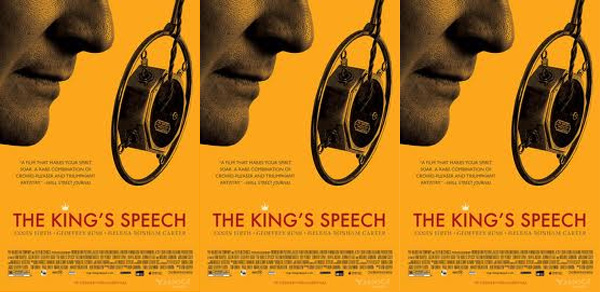
If you haven’t seen the Oscar winning Best Picture The King’s Speech, make it a priority. Here’s my plot summary: Prince Albert, known as “Bertie,” reluctantly ascends to the throne of Great Britain to become King George VI. Bertie’s speech therapist, Lionel Logue, helps the monarch overcome chronic stuttering to deliver a speech that changed the world.
This film offers so many great lessons but I will focus on those that will make you a better presenter.
Embrace The New Communication Medium
About living in a new era of global radio, Bertie states, “a king can no longer get by in life solely by looking good in a regal uniform and knowing how to battle while riding a horse.” The equivalent is true for the modern Principal or Marketing Director. We can’t get by with simply a nice headshot and bio on our website. Prospective clients want to know how we think and what we believe. Presentation Interviews and Web Video are both great ways to demonstrate this.
A Great Presenter is a Great Leader
The King must capture the confidence of the British people if they are to rally against Nazi Germany. The king’s speech, thus the title of the film, is what inspires the nation to enter World War II. Being a great presenter communicates that you are to be trusted and that you are great at what you do. In an interview, prospective clients judge your technical ability based on what’s in front of them, which are your presentation skills.
Ask for Help
You may not be a presentation expert, but you can hire one. A coach can provide objective feedback, help you develop content and provide accountability for your team to practice delivery. Whether you are an athlete, an executive, or the King of England, nobody achieves greatness without guidance.
Like Lionel Logue, LecoursDesign now offers executive coaching and group training for presentations and speaking. This complements our ability to design stunning slide decks. From verbal to visual, we’ve got you covered.
Presenting is a Learned Habit
There is a common misconception that great speakers and presenters are born, not made. The arc of improvement that Bertie demonstrates throughout the film exemplifies that Presenting is a learned habit. You can learn to be great. Either hire a private coach or attend a local Toastmasters meeting to improve your skills.
You Have a Voice
At a pivotal point in the movie, Lionel Logue asks a frustrated Bertie “why should I waste my time listening to you?” Bertie screams back, “Because I have a voice!” We all have a unique voice””a distinct point of view that only we can own. The challenge is to develop the confidence to communicate our voice with such enthusiasm that our clients believe that our voice/vision will solve their problem.
Distract Your Fear
In Bertie’s first coaching session, Lionel uses music to distract Bertie from how he sounds which gets him to focus on his story. Bertie is passionate about his story and you are passionate about yours. As Lady Bird Johnson said, “Become so wrapped up in something that you forget to be afraid.” It’s ok to be nervous or scared when you present. Harness that energy as passion for your subject and it will infect your audience (in a good way).
Use Technology to Help You Improve
There is a point in the movie when Lionel records Bertie speaking into a gramophone and gives him the recording. The effect of listening to his own voice is incredibly therapeutic. It can be beneficial for you too. It is impossible to objectively analyze our own speaking voice in the moment. So use the voice memo function on your smart phone, or even better, video record yourself speaking to listen (and see) where you need improvement.
Whether you have weak presentation skills or not, we all have obstacles in our path to greatness. Be as courageous as Bertie in facing those shortcomings, and who knows, you may just change the world.
There are so many other great lessons from the film. What did you take away?
by davidlecours | Jul 20, 2010 | Presentations
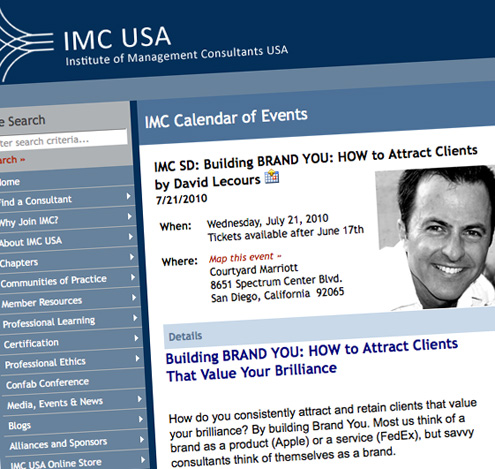
I have yet to find a better way to attract great clients than positioning myself as an expert within the AEC Industry. The two best ways to demonstrate expertise are speaking and writing. With speaking, you can make a deeper connection because your audience can see and hear your thinking in real time. This is akin to the increased emotional impact of seeing your favorite band in concert versus simply reading their lyrics.
Speaking is harder than writing so fewer people travel this path. This is an opportunity for you to stand out. I empathize that standing alone on stage may freak you out. I still get nervous every time I speak. It’s a primal fear hard wired into our collective consciousness. We relate standing alone on a podium with hundreds of eyes looking at us to standing alone on the savannah with saber tooth tigers eyeing us for their next meal. To shield you from harm, I’ve outlined how to get started, what to speak about and where to speak. Develop this skill of public speaking and you will attract clients that value your brilliance.
How To Get Started
Speaking is a learned skill. In the eight years I’ve been involved with Toastmasters, I’ve consistently seen guests attend their first meeting and sheepishly stand up to say their name while staring at their toes. Within a few months, the very same people are delivering 5″“7 minute speeches to great applause.
Find and join a Toastmasters club. I’m a member of two clubs. There is no better return on investment for your career. You’ll improve your speaking, listening, self-esteem and leadership skills in a fun and supportive environment. I recommend visiting a few clubs in your area to “date before you marry.” Each club has it’s own culture and traditions.
What To Speak About
As an excuse to avoid speaking, I frequently hear people say “I don’t have material that people want to hear” or “don’t I need to be a book author or PhD to be a speaker?” Nonsense. We all underestimate how much expertise we already have. You can speak about a problem that you recently solved for a client. If you want to get fancy, call this a case study. Speak about patterns or trends in your client’s industry. Then take a step further and offer some suggestions on how to respond to these trends. Give a “how-to” speech on something you know clients are struggling with. You could also create a humorous speech about common mistakes that clients make when working with a firm like yours.
Where To Speak
You are not going to be invited to speak at the TED Conference right away. But there are many venues to practice your craft. Speaking is like a muscle that you need to exercise regularly. Find as much stage time as you can. I’ve spoken at talent shows, conferences, luncheons, breakfast meetings, weddings and funerals. A great place to start is on a panel. Not all eyes are on you and you can distribute the workload among the other panelists. Good panels feel like a candid conversation (with the audience listening in).
Speaking Works
People don’t buy your services, they buy what you believe. Speaking works as a marketing tool because it is an opportunity for you to share what you believe in a non-sales environment. People don’t like to be sold to. So use speaking as a tool to build trust with your audience, and then enjoy potential clients handing you their business card.








